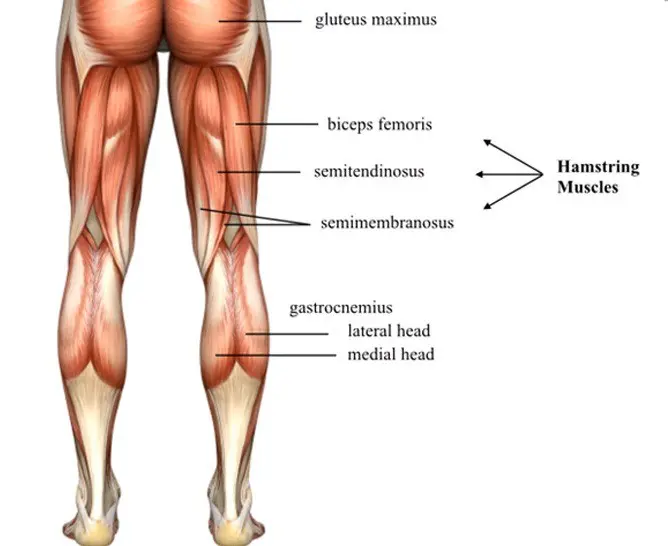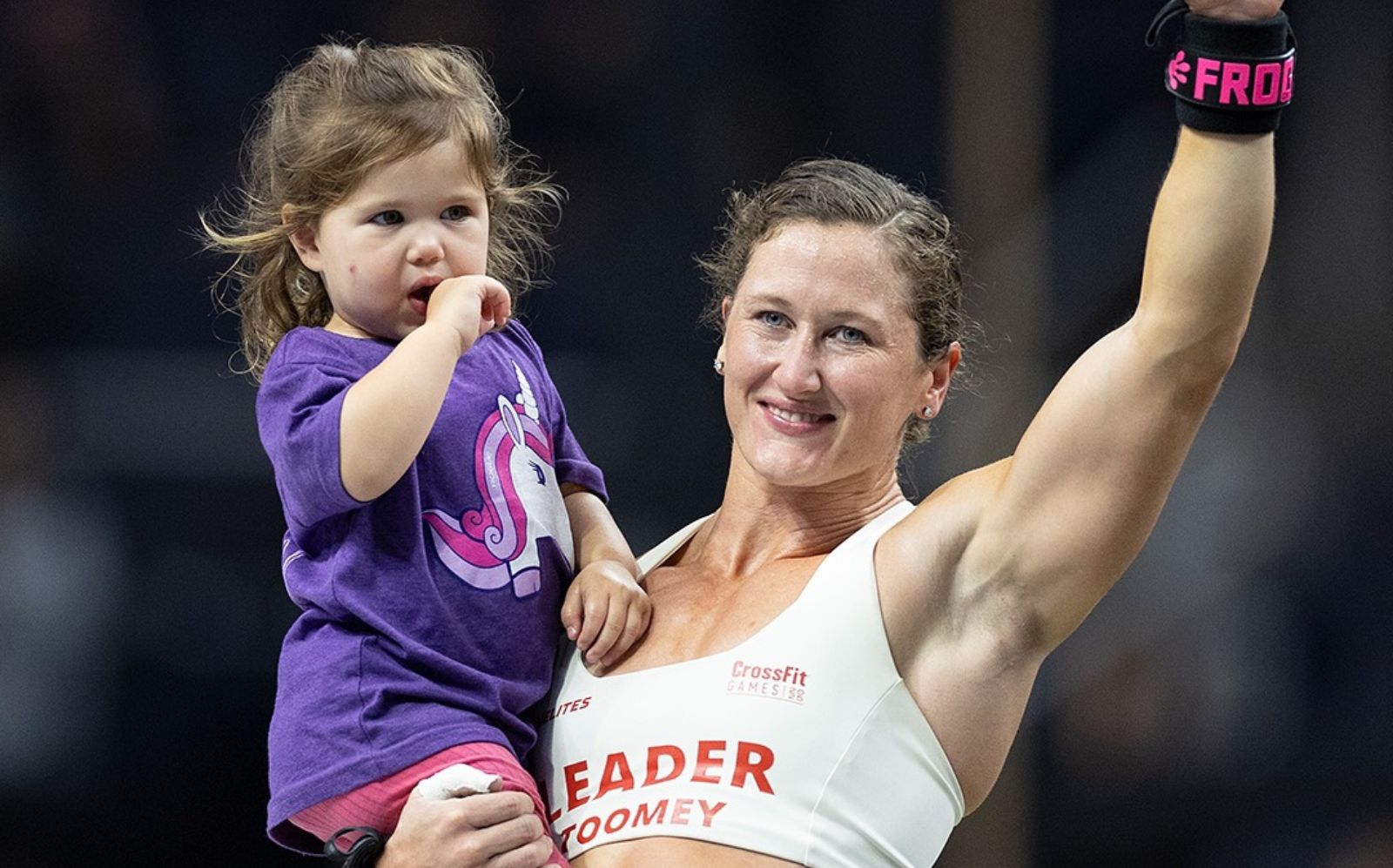I’ve been a personal trainer for over 30 years. Consequently, during that time, I’ve seen numerous exercises fall in and out of favor. Workout trends change, and, so too, do the exercises that are considered safe and effective. For instance, the upright row used to be regarded as a primo deltoid builder. Nowadays, many fitness experts label it as dangerous.
Another movement we can add to this list of somewhat controversial exercises is the good morning. This old-school exercise was once a training staple for many lifters, but now it’s something you’ll rarely see in commercial gyms.
That’s a shame because, when done correctly, the good morning exercise is a safe and effective way to work your entire posterior chain. As such, rather than being dangerous, this exercise can help strengthen and protect your lower back from aches, pains, and injury (1)
In this guide, I’m going to show you why and how to do this classic barbell exercise and provide you with some useful variations to keep your workouts fresh and interesting.
What is The Good Morning Exercise?
Exercises earn their names in lots of different ways. For example, some are named after the muscles they train, such as biceps curls, while others are called because of the anatomical movement you perform, such as leg extensions. Other exercises get their name from the equipment you use, like the bench press. And some movements are named after the person who invented them, such as Pendlay rows.
So, how did the good morning get its name?
Level Up Your Fitness: Join our 💪 strong community in Fitness Volt Newsletter. Get daily inspiration, expert-backed workouts, nutrition tips, the latest in strength sports, and the support you need to reach your goals. Subscribe for free!
Remember how I told you that this was an old-school exercise? Well, apparently, it’s so old that it gets its name from when polite people used to bow to greet one another. Okay, men would bow, and women would curtsey, but you get the idea.
Anyway, this golden-era barbell exercise earned its name because, when you do it, you look a little like you are bowing to an acquaintance and possibly saying, “Good morning” as you do so. However, the exercise itself is far from polite and genteel. Instead, it’s a powerful movement that’ll add slabs of muscle to your entire posterior chain.
How to Perform Good Mornings
One of the reasons that good mornings are such a controversial and often ignored exercise is that they place your spine in a mechanically disadvantaged position.
If you allow your lower back to become rounded, the weight that should be supported by your muscles ends up on your spinous ligaments and intervertebral discs. These structures, if injured, can take a very long time to heal.
Keep your injury risks to a minimum while getting the most from this exercise by performing it with perfect technique.
- Place a barbell in a squat or power rack set to just below shoulder height. Duck under the bar and rest it on your upper traps. Grip the bar with a slightly wider than shoulder-width grip. Pull the bar down into your back to make sure it won’t move.
- Unrack the barbell and take 1-2 steps back, so you have room to lean forward. Stand with your feet hip to shoulder-width apart. Bend your knees slightly and brace your core.
- Hinging from your hips, push your butt back and lean forward as far as your hamstring flexibility allows. Do NOT let your lower back round. Your range of motion will depend on your hamstring flexibility. Do not lower the bar below the level of your hips.
- Drive your hips forward and stand back up.
Watch Enrique Santatecla demonstrate the ‘Good Mornings’ exercise in the video below:
Muscles Worked
Good mornings are a posterior chain exercise, but what does that actually mean? Ultimately, the posterior chain is the collective term for the muscles on the back of your body. In essence, it’s every muscle from the base of your skull down to your heels. However, as some of those muscles are more important than others, it’ll be useful to list the major movers and shakers that you’ll be using during the good morning exercise.
Hamstrings – located on the back of your thigh, the hamstrings are made up of three muscles: biceps femoris, semimembranosus, and semitendinosus. These muscles work together to extend your hips and flex your knee.
Gluteus maximum – also known as your glutes, this large muscle is located on the back of your hip. Its principal function is hip extension, and it’s also involved in the external rotation of your hip.
Erector spinae – the collective name for muscles of your lower back. Your spinal erectors extend your spine and, during good mornings, stop your back from rounding. This means their role is mainly eccentric, meaning they generate force but don’t actually produce any movement.
Core – core is the term used to describe the muscles that make up your midsection. The core compresses your abdominal cavity to increase intra-abdominal pressure, or IAP for short.
IAP helps stabilize and support your spine from within. The muscles of the core include rectus abdominis, obliques, pelvic floor, transverse abdominis, and your diaphragm. Purposely contracting these muscles for increased core stability is called bracing, something you’ll need to do during good mornings.
While good mornings are predominately a posterior chain and lower body exercise, many of your upper body muscles are involved too. For example, you’ll need to use your upper back and arms to hold the bar in place so that it doesn’t roll off your shoulders mid-rep. However, after you’ve done a few reps, you’ll soon realize that it’s your glutes, hamstrings, and lower back that are working hardest during this exercise.
The Benefits of Good Mornings
Done correctly, good mornings are a very beneficial and effective exercise. Reasons to add this movement to your workouts include:
Learn how to hip hinge correctly – a proper hip hinge is crucial for the safe performance of many important exercises, including deadlifts, Romanian deadlifts, cleans and snatches, kettlebell swings, and bent over and Pendlay rows. Good mornings will teach you how to hip hinge correctly and strengthen this vital movement pattern.
Increased posterior chain strength – a strong posterior chain is essential in sports and for many everyday activities, such as when you run, jump, or lift. A strong posterior chain can also protect your lower back from injury. While good mornings aren’t the only way to train your posterior chain, they are a useful exercise for this critical muscle group.
Increased flexibility – the good morning exercise provides your hamstrings with a deep stretch. In fact, if you have tight hamstrings, you’ll soon find that you are unable to lean very far forward. Regular good mornings, even with a light weight, will stretch your hammies and increase your functional flexibility.
Build bigger glutes, hamstrings, and spinal erectors – good mornings are a useful hypertrophy or muscle-building exercise. If you want not only stronger but bigger muscles, this exercise can help.
Boost your squat and deadlift performance – good mornings are often used as an accessory exercise for squats and deadlifts. That means they target many of the weak links that could otherwise limit your performance of these main lifts. If you want to squat or pull bigger weights, adding good mornings to your list of accessory exercises will help.
Better posture – the good morning exercise works many of the muscles responsible for correct posture. If you tend to sit or stand with a rounded back, doing good mornings could help straighten you out.
Common Good Morning Mistakes
Get the most from good mornings by avoiding these common mistakes.
Using too much weight – while some lifters can use huge weights for the good morning exercise, that doesn’t mean heavy loads are the best option for all exercisers. In fact, going too heavy too soon is a great way to get hurt.
Instead of trying to see how much weight you can lift, use light to moderate loads and do high to medium reps – 8 to 15 is a good choice. You can go heavier and use lower reps, such as 4-6, but your risk of injury increases with the weight.
Do not round your lower back – I’ve said this before, but it’s such an important point that it’s worth repeating. A rounded back is a weak back, and your risk of injury is much higher if you do not maintain a neutral (slightly arched) lumbar spine.
If your lower back keeps rounding, you are leaning too far forward, your core is weak, or you lack positional awareness. Therefore, take whatever steps are necessary to prevent this from happening.
Hyperextending your neck – a neutral spine does not refer only to your lower back but also your neck. Your head should remain in a neutral position while doing the good morning exercise. Do not lift your head to look at yourself in the mirror. Instead, imagine your neck is in a surgical collar so that it stays in position. Lifting your head puts stress on the cervical spine and could lead to neck pain.
Not using a controlled movement – you’ll get better results from good mornings if you do them with a slow and deliberate tempo. Lean forward in 3-5 seconds, pause briefly, and then stand up forcefully. A slow descent makes the most of your eccentric strength, while standing up powerfully increases muscle activation. If you descend too fast and then “bounce” back up, you won’t get all the benefits this exercise has to offer.
Important Good Morning Exercise Tips
Get the most from this exercise with these handy tips!
1 – Brace your core before each and every rep – you must use your core to stabilize your spine and stop it from rounding. To brace, pull up your pelvic floor like you are trying to stop the flow of urine, contract your abs like you are expecting to get punched in the gut, and then inhale. You should feel your entire midsection tense and stiffen. Inhale and brace at the start of each rep, and only exhale as you return to the upright position. Reset your core between reps.
2 – Get the bar low on your traps – if you rest the bar on your neck, the good morning exercise will be more uncomfortable and harder to perform. Instead, pull the bar down onto your upper traps, if not a little lower. That way, the bar will sit on a thick pad of muscle and not on your bony, unprotected cervical spine.
3 – Experiment with different stances – move your feet in or out to affect your muscles differently. A wide stance tends to be more glute and lower-back centric, while standing with your feet closer together hits your hamstrings harder. Not sure which option to use? Why not do one set wide, one set regular, and one set with a narrow stance?
4 – Stretch your hamstrings before doing good mornings – tight hammies will reduce your range of motion, making this exercise less effective. Avoid this problem by stretching your hamstrings before and even between your sets. Avoids static stretches, as they tend to relax your muscles and reduce your strength. Instead, do dynamic flexibility exercises like forward leg swings.
5 – Have someone monitor your lower back – it’s not always easy to feel your lower back rounding. You could do good mornings next to a mirror and turn your head to look at your lower back, but this can affect your balance and posture. It’s better to keep your head straight when doing the good morning exercise.
Instead, have your training partner watch your lower back and tell you the moment you start to lose your lumbar curve. That denotes the end of your range of movement, and you should stand up before your back starts to round.
Top Good Morning Variations
As much as I LOVE the conventional good morning exercise, there is more than one way to do this movement. Use these exercises to add variety to your posterior chain workouts.
- Dead stop good mornings
- Good mornings with bands or chains
- Single-leg good mornings
- Safety squat bar good mornings
- Zercher good mornings
- Banded good mornings
- Seated good mornings
- Staggered stance good mornings
- Sumo stance good mornings
- Reverse hack squat good mornings
- Kettlebell good mornings
- Dumbbell good mornings
- Sandbag good mornings
- Prisoner good mornings
- Fixed barbell good morning
- Smith machine good mornings
1. Dead stop good mornings
Dead stop good mornings are almost identical to regular good mornings, but you do them in a power rack and rest the bar on the pins midway through each rep.
This breaks the eccentric/concentric stretch cycle, making each rep more demanding. Subsequently, this is a good variation for building explosive strength and power because you’ll need to work extra hard to get the weight moving off the pins.
2. Good mornings with bands or chains
Using bands or chains increases the resistance as you stand up. Known as accommodating resistance, this training method teaches you to lift more explosively and develops your ability to use speed to get you past your sticking points.
Bands and chains have a similar effect. Many gyms have chains, but bands are cheaper, lighter, and more portable. If your gym doesn’t have chains, buy a set of bands and keep them in your locker. Similarly, bands can also be used for deadlifts, bench presses, squats, and several other exercises, so they’re a good investment.
3. Single-leg good mornings
Single-leg good mornings are a challenging exercise. Not only do they test your balance, but you’ll also need to work extra hard to stabilize your hip and knee, increasing glute, abductor, and adductor activation.
Extend your non-working leg out behind you for balance, and don’t be surprised if you can’t use anywhere near half your normal training weight. This is a VERY tough good morning variation.
Here is full guide on single-leg good mornings.
4. Safety squat bar good mornings
Doing good mornings with a conventional barbell works, but it’s not exactly comfortable! Using a padded safety squat bar is much easier on your upper back and neck. Also, with your hands in front of you, safety squat bar good mornings put considerably less stress on your shoulders. This is a very popular exercise with the powerlifting crowd.
5. Zercher good mornings
Zercher good mornings are done with the barbell resting in the crook of your elbows. Bend your arms and keep your hands high to stop the bar from rolling down.
This variation shortens the distance between the weight and your hips, taking stress off your lower back, and also gives your biceps an extra workout.
On the downside, holding a heavy bar in this position is far from comfortable. If you find this exercise too painful to bear, cushion the bar with a squat pad, or wrap it in a towel. You can also do a version with a weight plate, dumbbell, or kettlebell held tightly to your chest.
6. Banded good mornings
No barbell? No problem! You can do good mornings using a loop-type resistance band. Simply put the band over your head and then stand on it. Cross your arms in front of your chest or hold the bands as preferred. You may also benefit from gripping the band to take some of the load off your neck. A tight band can be very uncomfortable, as it can limit the blood flow to your head.
This is a good variation for home and garage exercisers.
7. Seated good mornings
This variation decreases hamstring activation, so you can focus more on your erector spinae and glutes.
Level Up Your Fitness: Join our 💪 strong community in Fitness Volt Newsletter. Get daily inspiration, expert-backed workouts, nutrition tips, the latest in strength sports, and the support you need to reach your goals. Subscribe for free!
To do it, sit on a bench with your legs bent and feet flat on the floor. Lift your chest, brace your core, and pull your barbell down and onto your upper traps. Without rounding your lower back, hinge forward at the hips and lean over as far as you can without rounding your lower back. Return to the upright position and repeat.
Here is full guide on seated good mornings.
8. Staggered stance good mornings
Standard good mornings and most of the variations discussed so far are bilateral or two-legged movements. These variations generally allow you to lift the most weight. However, bilateral exercises can also cause and hide left-to-right strength and muscle imbalances. That’s why unilateral exercises are so valuable; they allow you to identify and fix these issues.
However, doing single-leg good mornings requires excellent balance, and working one leg at a time also means using less weight. This is a disadvantage for some lifters.
The staggered stance good morning lets you hit one leg at a time without needing the balance of an elite gymnast. While one leg is working, the other is supporting, so you can concentrate fully on each limb in turn. In summary, if you want to eliminate muscle imbalances but don’t want to sacrifice weight, add this exercise to your posterior chain workouts.
Here is full guide on staggered stance good mornings.
9. Sumo stance good mornings
If you are a fan of sumo deadlifts, you’ll LOVE this good morning variation. Performed using a very wide stance, this exercise will hammer your glutes and enhance hip flexibility. That’s not to say it’s better than regular good mornings, but you’ll undoubtedly feel it in some new and unusual muscle groups.
Adopting a wider-than-normal stance may help you achieve a deeper forward bend, and it also breaks you out of the habit of doing all your workouts with your feet shoulder-width apart. Some people also report that the wider stance feels a little easier on their lower backs.
Why not mix things up, and do a couple of sets with your hit hip width apart, a couple more with a shoulder width stance, and then your last two sets with a sumo stance? Sounds like a great workout to me!
Here is full guide on sumo stance good mornings.
10. Reverse hack squat good mornings
One of the biggest disadvantages to good mornings is how the bar tends to roll up your back when you lean forward. This can cause serious discomfort! Using a safety bar helps alleviate this problem, but not all gyms have this type of barbell.
However, most gyms have a hack squat, and you can do good mornings using this commonplace workout machine.
While you’ll probably get a few off looks, and may even be told you’re facing the wrong way, the reverse hack squat good morning is one of the most comfortable ways to work your posterior chain. That said, don’t mistake comfort for being easy – this is still a brute of an exercise.
11. Kettlebell good mornings
Full-size Olympic barbells weigh 45 pounds/20 kilograms and are long and unwieldy. In short, they maybe too heavy and too awkward to handle for some people. Also, they’re expensive, so less than ideal for home lifters on a budget. The good news is that you can work your posterior chain with a kettlebell.
Kettlebell good mornings start like a goblet squat, but, instead of bending your knees, you hinge at the hips. Holding the weight in front of your chest keeps your upper back engaged, and promotes good posture.
In conclusion, whether you work out at home, want to train with less than the weight of an Olympic bar, or just find long barbells hard to handle, kettlebell good mornings are an excellent choice.
Here is full guide on kettlebell good mornings.
12. Dumbbell good mornings
Dumbbell good mornings are another way to do this exercise without resorting to a barbell. Dumbbells are widely available and, if you want to build strength at home, an excellent choice for home and garage gym workouts.
With dumbbell good mornings, you hold the weight in front of your upper chest, taking stress off your neck. However, you will need to use your arms to support the load, which could limit how much weight you lift.
That said, some people rest the dumbbell across the back of their neck when doing this exercise. This only works if you have a large dumbbell or a narrow neck. Try both options to see which one works for you.
Here is full guide on dumbbell good mornings.
13. Sandbag good mornings
Sandbags are one of the most functional exercise tools around. As you lift them, the sand shifts, which challenges your stabilizers and core more than a fixed load. They’re also harder to hold, providing you with a great grip workout. Sandbags are also perfect for budget-conscious exercisers, as they can be made or bought for much less than an Olympic barbell and weights.
You can do sandbag good mornings with the weight held in the crooks of your arms, i.e., Zercher style, or with it resting across your upper back in the traditional manner. Try them both to see which works best for you. Needless to say, the most challenging version is probably the one you should be doing!
14. Prisoner good mornings
Prisoner good mornings are so-called because, with your hands clasped behind your head, you look like you’re being taken off to jail! Somewhat humorous names aside, this is a great way to work your posterior chain without resorting to external loads. As such, it’s a viable option for beginners and home workouts.
However, lack of load may mean you have to do high reps to feel your muscles working. Adding a mid-rep pause makes this exercise harder and may lower the number of reps you need to do to fatigue your muscles.
15. Fixed barbell good morning
A lot of exercisers wrongly assume that good mornings are a) an advanced exercise and b) have to be done using an Olympic bar. This is not the case. In fact, you’ll often see this exercise being done in group exercise classes, e.g., Body Pump, using a fixed-weight barbell.
So, don’t be put off good mornings; they’re actually a very accessible exercise for all levels of lifter, and that includes beginners. Grab a light fixed-weight bar, e.g., 10 pounds, and get to work. Gradually increase the load as you get stronger until you progress (if you wish) to a 45-pound Olympic bar.
16. Smith machine good mornings
Smith machine exercises are often criticized for being non-functional. That’s because the weight moves on rods, and can only travel up or down. Needless to say, this is not how heavy objects move in nature. However, this linear movement is not necessarily a bad thing, especially when you are training for hypertrophy.
Because you won’t have to waste energy controlling unwanted bar movements, Smith machine good mornings leave you free to work your posterior chain as hard as you like, making it a good option for bodybuilders.
In summary, while this may not be the most functional variation of good mornings, that’s a non-issue when hypertrophy is your primary goal.
Here is full guide on smith machine good mornings.
Best Good Morning Alternatives
Good mornings aren’t the only way to beef up your posterior chain. The following movements are just as effective, and you can use them to add even more variety to your lower body and back workouts.
- Romanian deadlifts
- Barbell hip thrust
- Kettlebell swing
- Cable pull-throughs
- Stability ball back extensions
1. Romanian deadlifts
With so many different variations of good mornings to try, you should have more than enough options to keep your training varied and fun. But, if you want a break from good mornings, Romanian deadlifts are probably the best alternative you can use.
The movement is very similar, but, with RDLs, you hold the bar in your hands instead of resting it on your upper back. This makes Romanian deadlifts a little easier on the lower back, but they’re still an effective posterior chain exercise.
Read more about Romanian deadlifts in this article.
2. Barbell hip thrust
Arguably the biggest drawback to good mornings is the amount of stress they put on your lower back. While this isn’t an issue for some lifters, it is for others, especially those with chronic lower back pain. Thankfully, you can work your posterior chain without hammering your lower back. Barbell hip thrusts are arguably one of the most lower back-friendly posterior chain exercises around.
Make this exercise more comfortable by lacing a folded towel or exercise mat across your hips. You can also do it with your back on the floor instead of the more customary bench. However you do it, this is a superb posterior chain exercise.
3. Kettlebell swing
Most posterior chain exercises are done using a slow, controlled tempo. This is arguably the best way to build strength and muscle mass. However, when it comes to power, you’ll get much better results if you lift your chosen implement quickly. Power is strength produced at speed. Therefore, training for power typically involves explosive movement.
The kettlebell swing is essentially a dynamic hip hinge. As such, it’ll increase hip extension strength. Try to do this exercise as explosively as possible, turning the eccentric or lowering phase into the concentric or lifting phase as quickly as possible.
4. Cable pull-throughs
Cable pull-throughs are a popular exercise with powerlifters. They use them as an accessory exercise to improve deadlift and squat performance. Like good mornings, this exercise works your entire posterior chain, but it’s somewhat more lower back-friendly, so good for those days when your back is tired or sore.
You can do this exercise slowly, like a good morning, or explosively, like kettlebell swings. Both are excellent options for all lifters and only just powerlifters.
5. Stability ball back extensions
Back extensions don’t look anything like good mornings, and yet they work many of the same muscles. The great thing about this exercise is that you don’t need any weights to do them, and even the stability ball is optional! Do this exercise instead of good mornings, or to warm up your lower back and hips, ready for the main event!
Good Mornings Workout
Are you unsure how to incorporate good mornings into your leg workout? I hear you! Here is a training plan that features good mornings and several other classic lower-body exercises. Feel free to use the good morning variation of your choice and adjust the sets and reps to match your current training goals.
Do this workout 1-2 times per week, but only after a thorough warm-up. Warming up reduces your risk of injury and helps improve workout performance.
| # | Exercise | Sets | Reps | Recovery |
| 1 | Good morning | 4 | 8-10 | 90 seconds |
| 2 | Leg curls | 3 | 12-15 | 60 seconds |
| 3 | Front squat | 3 | 8-10 | 90 seconds |
| 4 | Leg extension | 3 | 12-15 | 60 seconds |
| 5 | Walking lunge | 3 | 12-15 per leg | 60 seconds |
| 6 | Barbell hip thrust | 3 | 8-10 | 90 seconds |
| 7 | Standing calf raise | 3 | 12-15 | 60 seconds |
FAQ’s
Do you have a question about good mornings or posterior chain training in general? No problem, because I’ve got the answers! Need more information? Drop me a line in the comments section below, and I’ll get back to you ASAP.
1. Where does the name “good morning” come from?
Good mornings are so-called because, when you do them, you’ll look like you are bowing to greet someone. This name supports the notion that this is a very old-school exercise. Don’t let the polite-sounding name of this exercise fool you, though. It’s a VERY effective glute, hamstring, and lower back builder.
2. Are good mornings safe?
Performed correctly, good mornings are relatively safe. However, if you use too much weight or round your lower back, it could cause serious injury. Maintaining a neutral or slightly arched lower back is critical for the safe performance of this movement. Follow the step-by-step guide in this article to ensure you’re doing it right.
3. Good mornings hurt my neck. What can I do to stop this?
Neck pain is a common complaint during good mornings. However, it’s usually easy to fix. Firstly, make sure the barbell is resting on your upper traps, and not the bony part of your neck. Secondly, pull the bar down and hold it in place so it won’t roll up your neck as you hinge forward. Finally, consider using a squat bar pad or folded towel to cushion your neck.
If none of these solutions work, I suggest you try one of the more neck-friendly alternatives, such as Romanian deadlifts or Zercher good mornings.
4. How many times a week can I do good mornings?
Muscles only grow and adapt when you are resting. it typically takes 48-72 hours for s muscle to recover from an intense workout. As such, you should train your muscles 2-3 times per week. This provides a good balance between work and rest. Training them more often could lead to overtraining. Overtraining normally results in lost gains and decreases in performance, which is the opposite of what your workouts are meant to achieve.
5. What weight, sets, and reps should I use for good mornings?
Regarding weight, I can’t really tell you how much to lift because I don’t know how strong you are. However, the weight should be heavy enough that your muscles are within 1-3 reps of failure as you reach the end of your set.
Your rep range is goal-dependent. use heavy weights for low reps, typically 1-5, to build strength, and moderate weights for 6-20 reps to build muscle. Do 3-5 sets depending on your energy levels and experience. Fewer sets are ideal for beginners, whereas more experienced exercisers will benefit from more sets.
Finally, adjust your set periods based on your reps. Low reps with heavy weights need longer rests between sets, 3-5 minutes being quite typical. Higher reps and lighter weights usually need shorter rests, e.g., 60-9- seconds.
Good Morning – Wrapping Up
Despite being a controversial exercise, the good morning is not inherently evil, and doing it doesn’t mean you’re on a one-way trip to Snap City. In fact, when done correctly, it’s a very effective and beneficial exercise. If you want to increase your squat or deadlift performance, the good morning should definitely be one of your accessory exercises.
That said, there is a reason that a lot of trainers think the good morning is risky; done incorrectly, it puts a lot of strain on your lower back, and rounding your lumbar spine while you are lifting weights is rarely a good idea!
So, if you want to try good mornings, exercise your common sense as well as your posterior chain. Start off with light weights, even just an empty barbell or a broomstick, and make sure you brace your core and maintain a neutral spine. Increase your weights gradually, and never at the expense of your form.
References:
- Vigotsky AD, Harper EN, Ryan DR, Contreras B. Effects of load on good morning kinematics and EMG activity. PeerJ. 2015 Jan 6;3:e708. doi: 10.7717/peerj.708. PMID: 25653899; PMCID: PMC4304869.
Interested in measuring your progress? Check out our strength standards for Bench Press, Good Morning, Stiff Leg Deadlift, and more.











